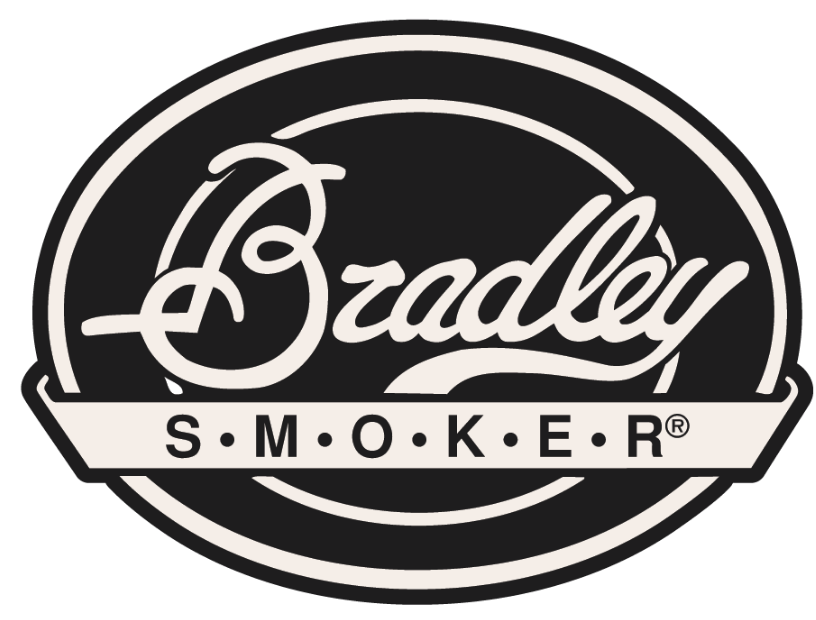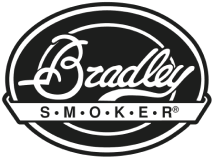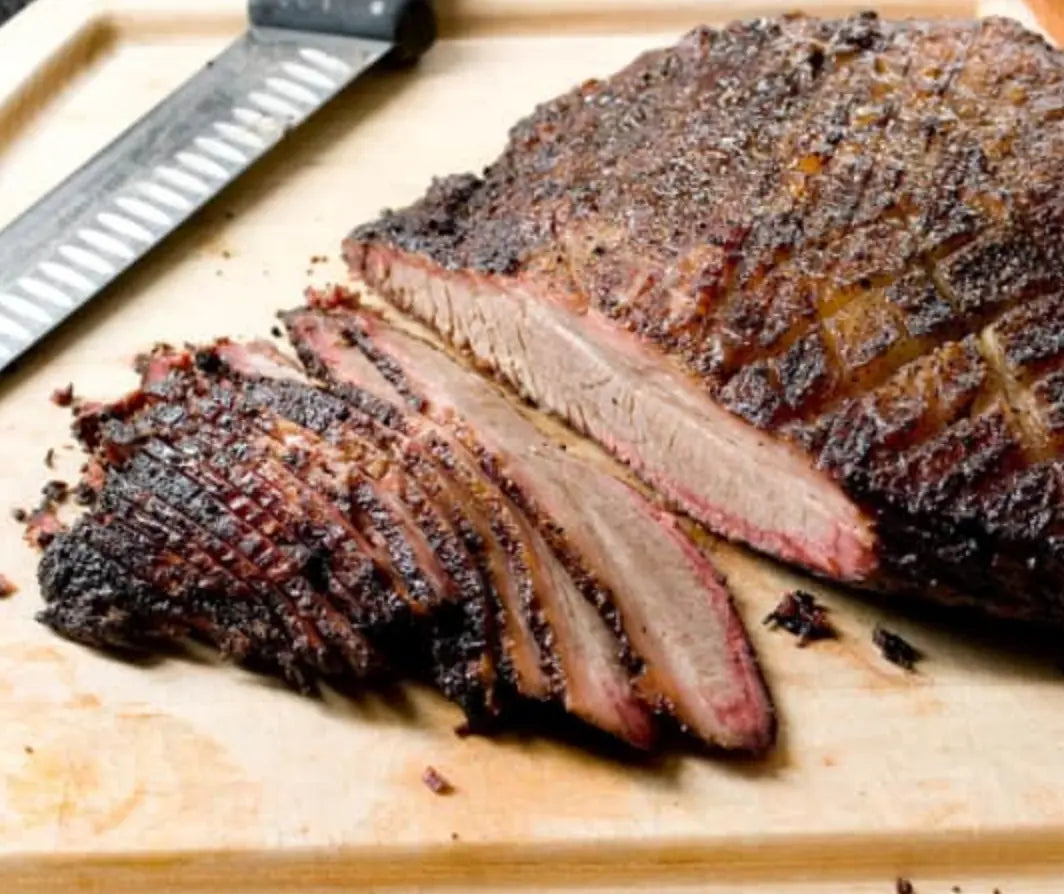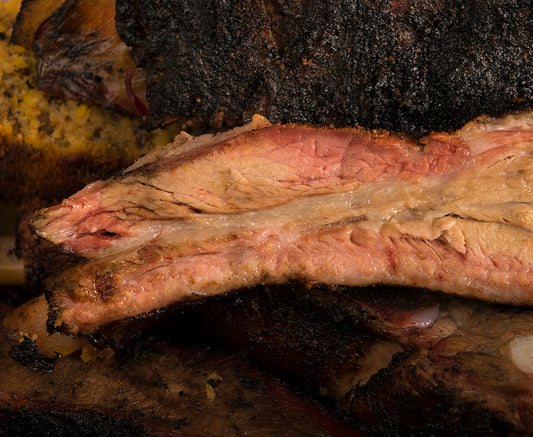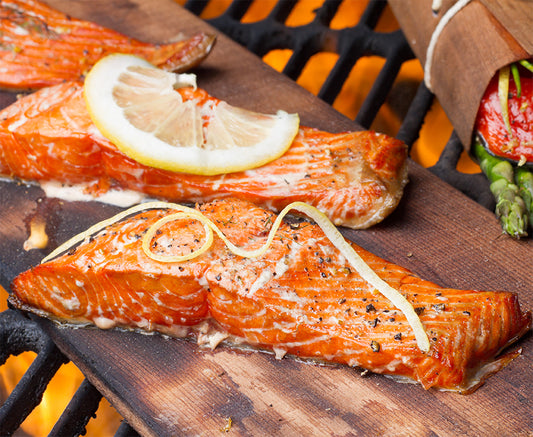Today I’d like to talk a little about brisket terminology. Here are some terms that will help you when reading recipes or discussions about this fine hunk of meat, heavily favored by Texans.
Perhaps we should start with what it is. The brisket is the chest meat of the cow. It is full of connective tissue, that gives it a full flavor, but that also makes it tough. For this reason, and the fact that it is inexpensive makes it a good cut for low and slow smoking.

Packaging, Types, and Parts of a Brisket
The words used in the world of brisket are Point, Tip, and Deckle, the thicker more point like the end. The best for flavor and fat content is the Flat and Blade, this is typically the thinner, wider section. I like this the least as it contains less fat and can be dryer. These two distinct pieces of the brisket come attached via a fat layer. But have grains that run the opposite direction and have different textures and fat content. So, you will have to taste test what you like best and how you will choose to cook the brisket, either whole or separated.
The typical brisket that you will find in a store comes in various cuts, packages, and types.
What Briskets Supermarkets Offer
For example, at Costco, you will always find the Flat or Blade, well-trimmed of fat (separated from the tip or point. The cryopac packer package (what all meats come in from a slaughterhouse) has been opened, the brisket separated, and the flat trimmed for you at an extra cost to you. This might cost up to $2.99 per pound.
At Smart & Final, most supermarkets, and other stores, you will find the brisket typically comes in a cryopac package (A packer cut mostly by the packing plant of IBP in either a Choice or Select cut). This means that the Packing plant cuts its meat in a standard way and puts it in a vacuum-sealed, heavy plastic bag so that beef can live in for 2 – 4 weeks under correct refrigeration. Reference to Choice or Select that is the grading and the amount of fat that is marbled throughout the meat.
More fat is good and a higher grade. Remember this, PCS (as in portable telephones), convert it to Prime, Choice, Select. Prime is BEST, and Select is Least BEST. Nice little memory tool.
When meat comes packaged in a cryopac package with a packer cut, you get it the cheapest in that the butcher does not have to spend his time re-trimming it. Now you are charged less and get to trim it the way you want and have all the fat on it you might want.

Types Of Brisket Fat
You might also look for a brisket with white fat versus yellow fat. This most likely indicates it is pure corn fed. This is a good thing. You might hold it by the two ends and see if one is more flexible than the other. This might indicate the meat is more tender as well. And, the last thing is some folks say that cows, 90% of the time, typically lay on their right sides when resting. So, you might want to try for a left-sided brisket. All these hints or tips might help.
Trimming And Preparation
Trim most of the fat off the brisket and then leave about 1/8 – 1/4. Don’t go into the crevices (between point and flat) very deeply if at all. Then try to get most of the membrane type fat off where possible to allow for a better-tasting texture, rendering, and seasoning (rub, marinade, glaze) penetration and build-up). Just leave a bit of fat on to self-baste, but not enough to bother you while slicing and eating. After it is cooked, it all tastes crusty and great! You might take a LOT of fat off your brisket. Maybe 1/4 of its entire weight.
This process can take a bit of time and a lot of fat will come off, but it is worth it.
Cooking In A Smoker
Always cook a whole pack of cut brisket if possible. Typically, you don’t want to work or stay up all night, babysitting your smoker. Start with a Bradley Smoker, and smoke to around 7 – 8 hours once packed with bisquettes. Use oak or hickory bisquettes. After 7-8 hours, rotate the meat and put the brisket in the oven if at home. Then, cook the briskets between 225 – 245 F for 15 hours for an 11-14+ pounder.
Start basting about half-way through the process and about every 90 minutes from that point on.
Pro Tip: For a brisket, since it has so much meat that will never get the direct contact of the smoke, I will use mesquite and a dab of hickory, maybe oak.
The Brisket Cooking Process
Before you cook your briskets between 225 – 245 F for 15 hours for a 11-14+ pounder, you will rotate and turn then start basting about half-way through the cooking process. You need to turn and marinade at hourly to 90-minute intervals (if you don’t wrap) after the brisket has been on at least 8 hours or so. Due to the hourly marinade (heat loss each entry), it will take the full 15 hours to cook.
Once you reach a point where you think it might be done, there are several ways of testing. You can do the fork test in the thicker part of the flat, which works sometimes. If it’s working then you will be able to feel an easy entry into the thick side of the flat and it won’t lift when removing.

Finishing And Glazing
So, if you are going to glaze, then remove it just when you find it is done to your liking. Put your favorite glaze on, and then put it back in for 30 minutes. This will caramelize or glaze a bit and make it taste better. Typically, sweet does not go with brisket like it does pork. But, some people love the taste.
If it gets done early, wrap it in the film (cellophane) or foil and then put it in a cooler. Or not wrap and put in a catering heat-holding box (Cambro like) and let it continue to cook a bit. It can hold its heat for many hours and get even better.
So, the bottom line is that sometimes it’s a tough thing to judge exactly. I just find that cooking my brisket for 15 hours, basting often after half-cooking time, and starting to check for doneness at about 13 – 14 hours gets me success most of the time.
When I do them this way the moisture pours out of them like a fire-hose, they break apart perfectly, and they taste great with a bit of CRK Fancy Glaze.
Trimming And Slicing
When you lay your brisket out to trim or slice for the first time, simply push your finger into the middle of the brisket a slight distance. You will immediately detect which way the grain is going. Then cut it opposite of that. Then, separate the flat from the point because their grains do run different directions and this gives you a chance to remove the fat in between.
Final Thoughts
And there you have it, our Brisket Terminology and Cooking For Food Smoking! We hope you found the information above informative for your next cookout adventure. Don’t forget to check out the Bradley Smoker Blog for more scrumptious food smoking tips & tricks!
